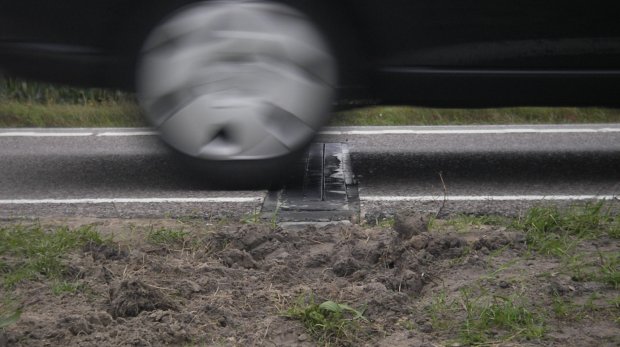
Just when I thought it couldn’t get any more stupid…
Solar Freakin’ Roadways was a bad enough idea…now, the California Energy Commission has agreed to fund several projects to investigate the generation of electrical energy from piezo electric cells placed in road surfaces. The idea is that since a piezo device can convert mechanical vibrations into electricity, they can regain some of the energy lost by cars and trucks that are constantly vibrating the roads.
At first it seems like a reasonable idea…until you think about the tiny amount of energy involved compared to the cost of such devices.
While I’ve seen estimates that assume up to 40% of the energy expended by a vehicle is available for recapture, this amount is not available to produce road vibrations. Most of the energy losses are elsewhere — wind resistance, waste heat generation, friction in the driveline — and only 4% goes into the rolling resistance of the tires.
And most of THAT 4% rolling resistance is lost by generation of heat as the tire flexes….I’ll bet less than 1% goes into vibration of the road surface itself, which is what the piezo devices would be capturing a part of.
Then, what portion of that 1% could be harvested? Maybe a tenth of it? So, now we are talking about retrieving about 0.1% of the energy expended by moving cars and trucks. And that’s if the cells have 100% efficiency, which they don’t.
So, no…not “up to” 40% is available to capture by piezoelectric devices. And considering the cost of the piezoelectric cells, this would be a really bad idea…except for whatever company is getting rich off of manufacturing them.
Plus, there is the additional question of whether the devices are passively harvesting some of the road vibrational energy that would occur anyway…or would they be an active additional source of rolling resistance of the tires? If it’s the latter, then it would be ‘highway robbery‘, because it would be reducing the fuel efficiency of cars, and stealing a small portion of that extra energy required to push against the devices to convert it to electricity.
While a pilot project in the Netherlands found that Generating Electricity from Vibrations in Road Surface Works, reading of that article reveals the amount generated isn’t enough to even power a street light.
And this does not even address the practical issues involved in replacing a portion of road surfaces with piezo strips. Will it be like driving over rumble strips (see the photo above)? That won’t be very popular. What will it do to the integrity of the road surface? What if one breaks free and flies through a windshield and kills someone?
Sounds like just another energy boondoggle to me.

 Home/Blog
Home/Blog




Thanks for sharing this. It’s mindblowing.